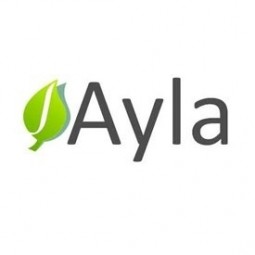实例探究.
添加案例
我们的案例数据库覆盖了全球物联网生态系统中的 18,927 家解决方案供应商。
您可以通过筛选条件进行快速浏览。
Download Excel
筛选条件
-
(7)
- (6)
- (5)
- (1)
-
(3)
- (3)
-
(2)
- (2)
-
(1)
- (1)
- (3)
- (3)
- (2)
- (1)
- (1)
- 查看全部 8 行业
- (4)
- (3)
- (2)
- (2)
- (1)
- 查看全部 6 功能区
- (6)
- (4)
- (2)
- (2)
- (2)
- 查看全部 7 用例
- (6)
- (4)
- (4)
- (7)
Selected Filters

|
智能水过滤系统
在与 Ayla Networks 合作之前,Ozner 已经在使用云连接来识别和解决水过滤系统故障以及监控滤芯是否更换。但是,在 2015 年 6 月,Ozner 高管与 Ayla 讨论了该公司如何利用物联网技术进一步改善其供水系统。他们喜欢从 Ayla 那里听到的消息,但高管们需要确保 Ayla 的敏捷物联网平台能够提供 Ozner 所需的安全性和可靠性。
|
|

|
Wearables Use Case: Ayla enables manufacturers of wearables to create cloud-connected versions of their products
The wearable device market represents one of the quickest growing segments of the Internet of Things (IoT). From wearable fitness trackers to medical and healthcare monitors, devices are becoming cheaper and more powerful, contributing to double-digit growth. All the while, providing end consumers with an increased amount of data on their health and wellness. Collecting consumer health and wellness data, and displaying it on a mobile device in a secure fashion is not an easy task. The ability to connect these wearable devices to a secure and scalable cloud is often beyond the scope of device manufacturers.
|
|

|
Ayla Enables Cloud-Connected Fire & Life Safety Systems for Enhanced Reliability and User Experience
Fire and life safety manufacturers face the challenge of creating highly reliable products that incorporate the benefits of IoT while meeting cost and usability constraints. These products must work every time, as they are often a matter of life or death. The challenge is to offer innovative and reliable products that remain competitive and meet consumer product constraints.
|
|

|
Water Softener Company Enables Dealer Access
The OEM was concerned about the privacy of the data generated by the connected water softeners and about how much data a dealer could and should obtain on their customers’ installed units. Because most of a home’s water supply flows through the water softener, the unit could collect data revealing information about the number of people in a household and their water usage patterns, perhaps even their vacation schedules. Concerned about this level of data, the OEM wanted to put in place controls that would allow an end customer to determine how much information their connected water softener shared with dealers on an ongoing basis. At the same time, the OEM did not want to hinder the dealers’ ability to be notified about certain events that would help detect or avoid problems with the installed units. The OEM wanted the dealer to have enough data to remotely troubleshoot or resolve issues.
|
|

|
HVAC Use Case: Ayla enables manufacturers of HVAC systems to create cloud-connected versions of their products
When talking about connected buildings, HVAC is a must-have topic for any discussion. Accounting for about half of a commercial building’s energy usage, and as a leading contributor of occupant comfort, HVAC represents not only a massive opportunity for cost savings, but also the creation of a comfortable and efficient environment. However, the challenge for many property managers looking to cash in on this opportunity comes in architecting a cost-effective solution, both in regards to implementation and ongoing maintenance, that supports open communication across all systems and devices, provides insights into product usage, and more importantly, the flexibility and control to implement changes based on this data.
|
|

|
Water Treatment Use Case
Water softeners work by removing impurities—iron, minerals, animal waste, herbicides, pesticides, other chemicals—that water collects as it travels from its pure rain or snow form to where it enters a home. Once in place, the water treatment systems require periodic “recharging” with replacement filtering agents, a process that needs to be performed by authorized dealers. Other than recharging, however, traditional water softeners have operated in an “out of sight, out of mind” manner. No one involved in water softeners—manufacturers, dealers, end users—have been able to monitor or control much about their operation.
|
|

|
Lighting Use Case: Ayla Enables Manufacturers to Create Cloud-Connected Lighting Systems
Lighting is one of the major uses of electrical power on a daily basis around the world. Statistically speaking, between 20 and 50 percent of the total energy consumed in homes and offices is used for lighting. What most people don’t realize is that over 90 percent of the lighting energy expense used for most buildings and homes is wasted due to over-illumination. In addition, in commercial applications such as office buildings, it can often be difficult, without human involvement, to monitor which bulbs may be burned out and need replacement, causing an unbalanced lighting situation.
|
|

